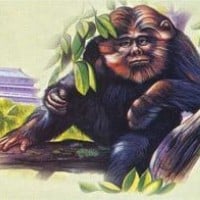Top 10 Most Interesting Creatures In Chinese Mythology
China has many interesting folktales of mythology tracing back from many centuries - even before these were documented in books, and it has remained a huge part of it. Some of these creatures remain famous to the point that some of them are even referenced in conversations or literature. With roots from ancient philosophy, religion, folk stories, and other traditions which are passed today. this list features 10 interesting creatures that come from Chinese folklore and its mythology.Bai Ze is known to be a holy creature that is commonly depicted as a beast similar of that of a cow. It is said that the Bai Ze is a harbinger to fortune and happiness when seen. The name is translated to "white marsh". There's also a Japanese version of the creature in which it's depicted as an intelligent cow/cat hybrid consisting of multiple eyes. Not only that it has those characteristics, but what makes them more bizarre is that its face resembles that of a human. Other depictions include a lion-like creature consisting of 8 eyes and several horns in their head.
Widely known to be a part of the four evil creatures of the world. Consider this as the Asian version of Beelzebub. Taotie was the embodiment of greed and glutton. Earlier it was represented on jades, vessels and other pottery, but it's commonly depicted as a dinosaur-like creature. Apparently, the Taotie was formerly a descendant of someone who took greediness to the extreme - hoarding food, wealth, and other luxurious objects. Even though these "needs" were beyond sufficient, his behavior would remain the same without any regards to other people, according to the Spring and Autumn Annals
Now we're heading into the scarier picks of creatures which could potentially send shivers down your spine. Its scariness leads up as one of the stronger contenders of the top 3. Behold the notorious vampire called the Jiangshi. This creature - also named the hopping vampire is commonly depicted as a corpse donned with Qing Dynasty-ish clothes. The Jiangshi being resurrected to drain the life forces of people at night - killing them in result, while hiding on dark areas throughout the day. The name of the creature literally translates to "stiff corpse", hence why they are commonly depicted with limbs so stretched that they are incapable of bending them with ease. The Jiangshi has to bounce with arms stretched in order for them to move freely. Overall, you wouldn't want this creature seeping itself to your dreams.
Commonly associated with its partner Horse-Face, these two creatures serves as the guardians of Diyu (a chinese version of Hell). They both take the appearance of men, although their faces taking the appearance of the Ox and the Horse respectively. Their main purpose is to bring human souls who have passed in which they are judged based on their decisions they've made on Earth.
One of the most iconic creatures coming from China. The Chinese Dragon typically springs up to mind whenever Chinese Mythology is mentioned. The Chinese Dragon mythology has become an influential part of China over generations, even spreading to countries such as Japan and Korea. You know the familiar depiction of the dragon with four legs and a body resembling that of a snake, but some people aren't aware that this legendary creature can take a few more forms such as turtles or fish. It's also known to possess abilities capable of controlling the weather - hence why they are often blamed for storms and floods. Obviously, the Chinese Dragon is known to represent power, and fortune to those who have enough merit.
This is the Chinese version of the Japanese creature Kitsune. Also known as the Celestial Fox, both creatures are believed to be capable of living up to a thousand years. When the fox reaches its first millennium and gains its ninth tail, it's believed that the creature will evolve to the sky fox then ascend to heaven. Stories tracing back to the Jin dynasty states that a fox turns into a woman in the age of 50, then transforms into a shaman with the age doubled. In order to grow a tail, one has to overcome a "catastrophe" every century with ease. However, only a few foxes can squeeze through the barrier and make it to its first millennium. Wisdom plays a major part of cultivating these kinds of creatures, which can be obtained by either the guidance of a monk, treasures, or a suitable environment.
The Tiangou is a famous legendary creature resembling of a dog which is known to "eat the sun or moon which results in an eclipse". The Tiangou is known to have two sides. The creature is believed to be the harbinger of peace and security when manifesting as the white fox, which is the symbol of good. But its evil side manifests as a moon-consuming black dog. The Tiangou also has an opposer who goes in the name Zhang Xian - who is known as a deity of boys said to shoot arrows at the Tiangou whenever the creature would attempt to eat the sun or the moon.

The Yeren is another notorious creature resembling of an ape which dwells on mountainous terrains in China, usually far from civilization. They are typically characterized as strong, agile yet hairy creatures who plunder villages. They're commonly associated with the famous creature Bigfoot, and in fact, stories of the Yeren have been shared for thousands of years - notably during the Warring States Period and the Tang dynasty. Additionally, the Yeren was depicted as a lustful creature known to commit acts of debauchery to villagers. Because of its characteristics, the Yeren became a symbol of wild aggressiveness.
Commonly depicted as a faceless bag of meat with four wings and three limbs on each side, the Hundun is a harbinger of chaos and disorder. Considering the name of the creature is hard to translate into certin languages, it's known to have a handful of interpretations, with hun translating to chaos, and dun translating to stupid. What's also known is that the Hundun is associated with the cosmic egg, which is believed to have existed long before humans taking foot on Earth. In one of the earlier texts, the Hundun also has one interesting trait - that is a preference of singing and dancing despite no facial features, while other texts depicted him as a sacred dog living in Kunlun - a mountain range that is associated with the divine.
Didn't know this came from chinese mythology!

Consider this as the Asian version of the unicorn or the pegasus. While they both have entirely different characteristics, the Qianlima is known to move extremely fast, moving to about a thousand li (chinese mile) a day, which is about 400 kilometers in total. Since Chinese people are known to be talented, the Qianlima is also used as a word for describing those who possess great talent.